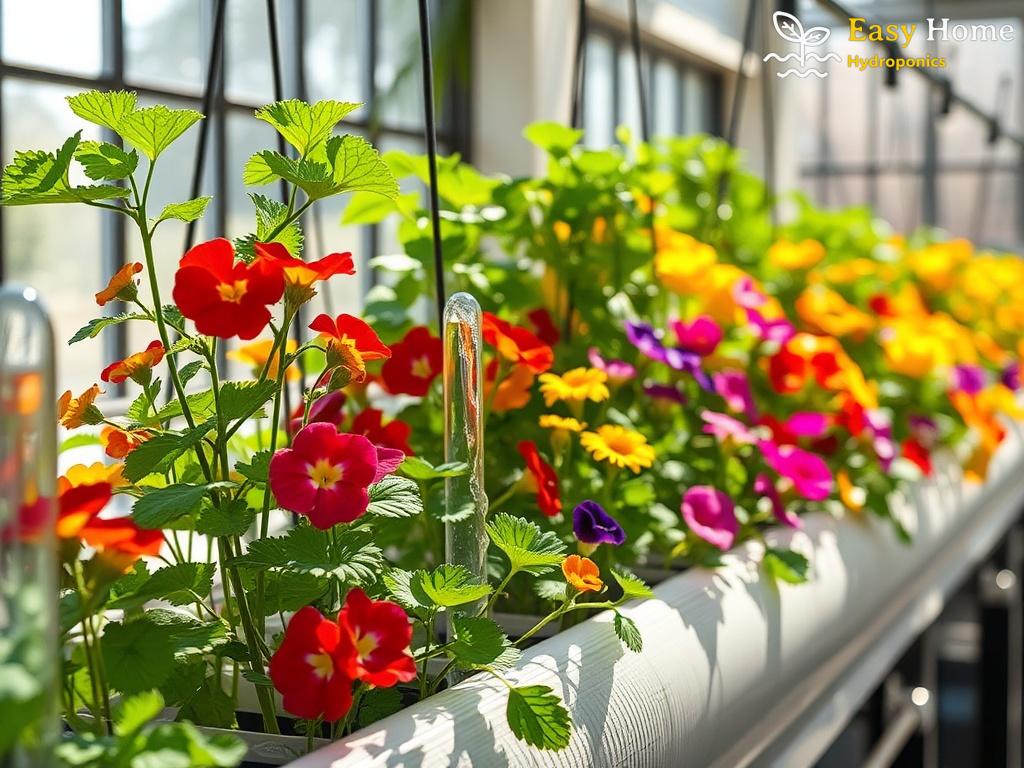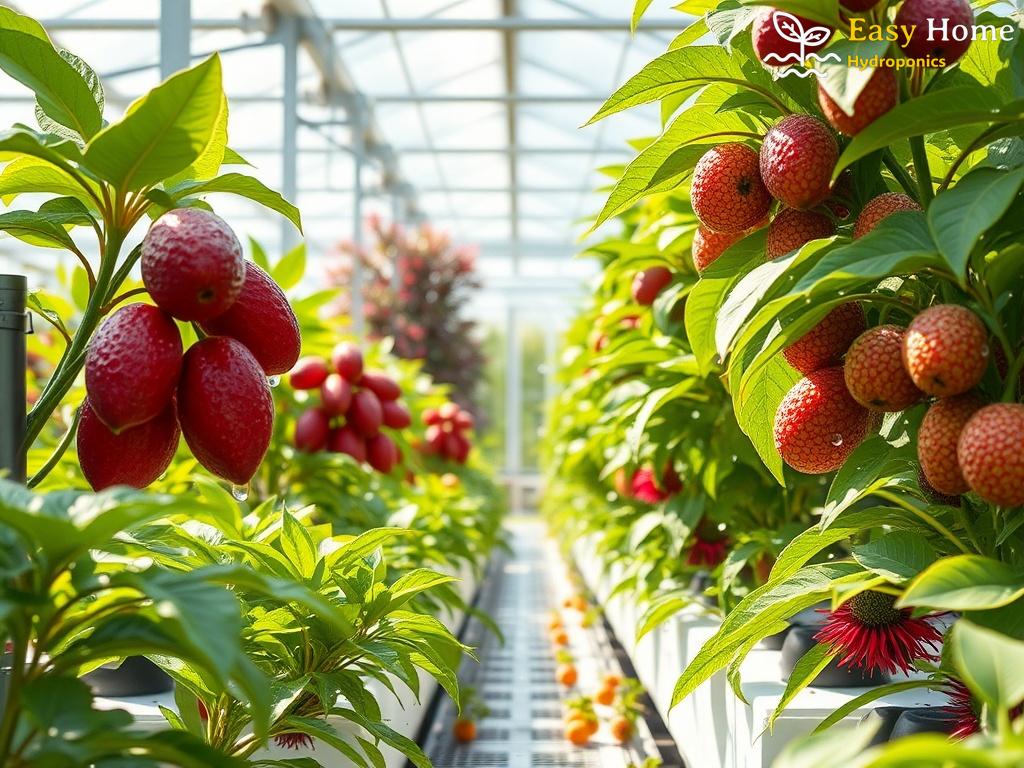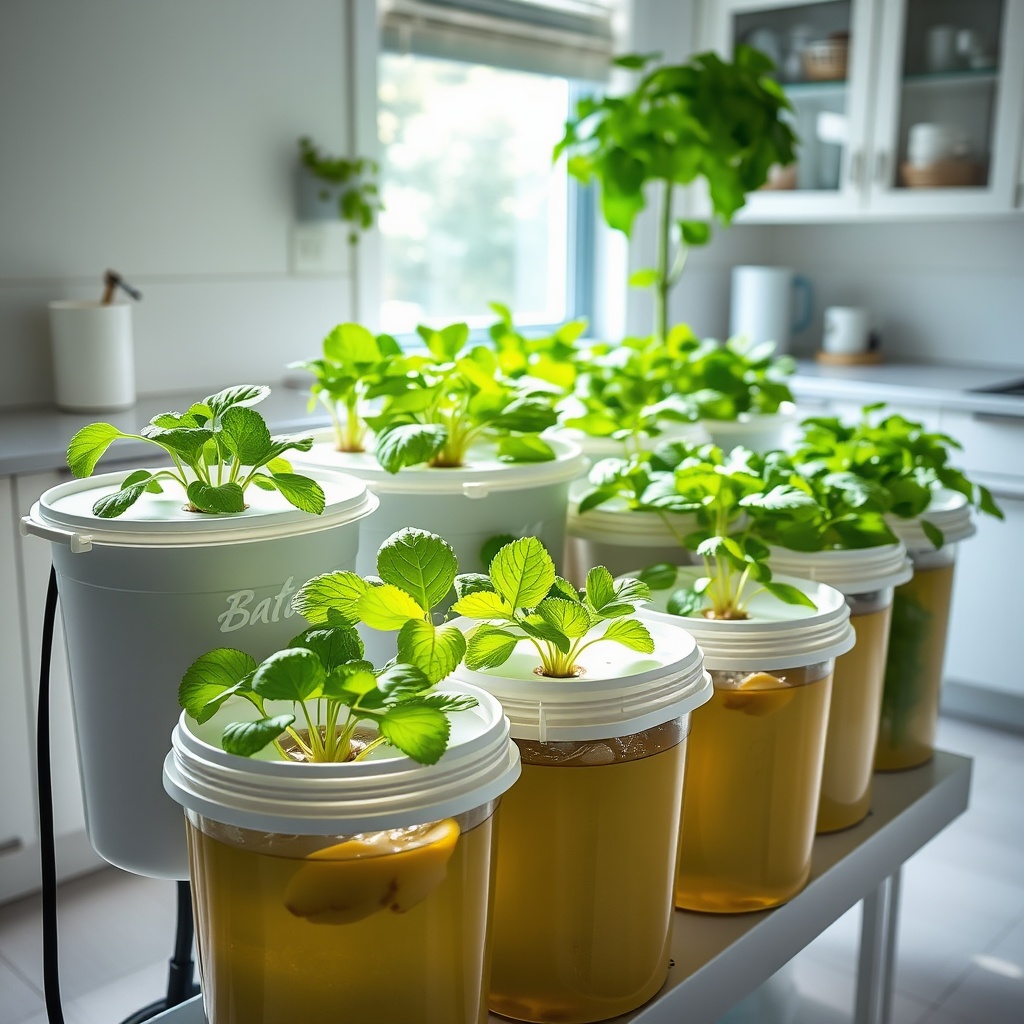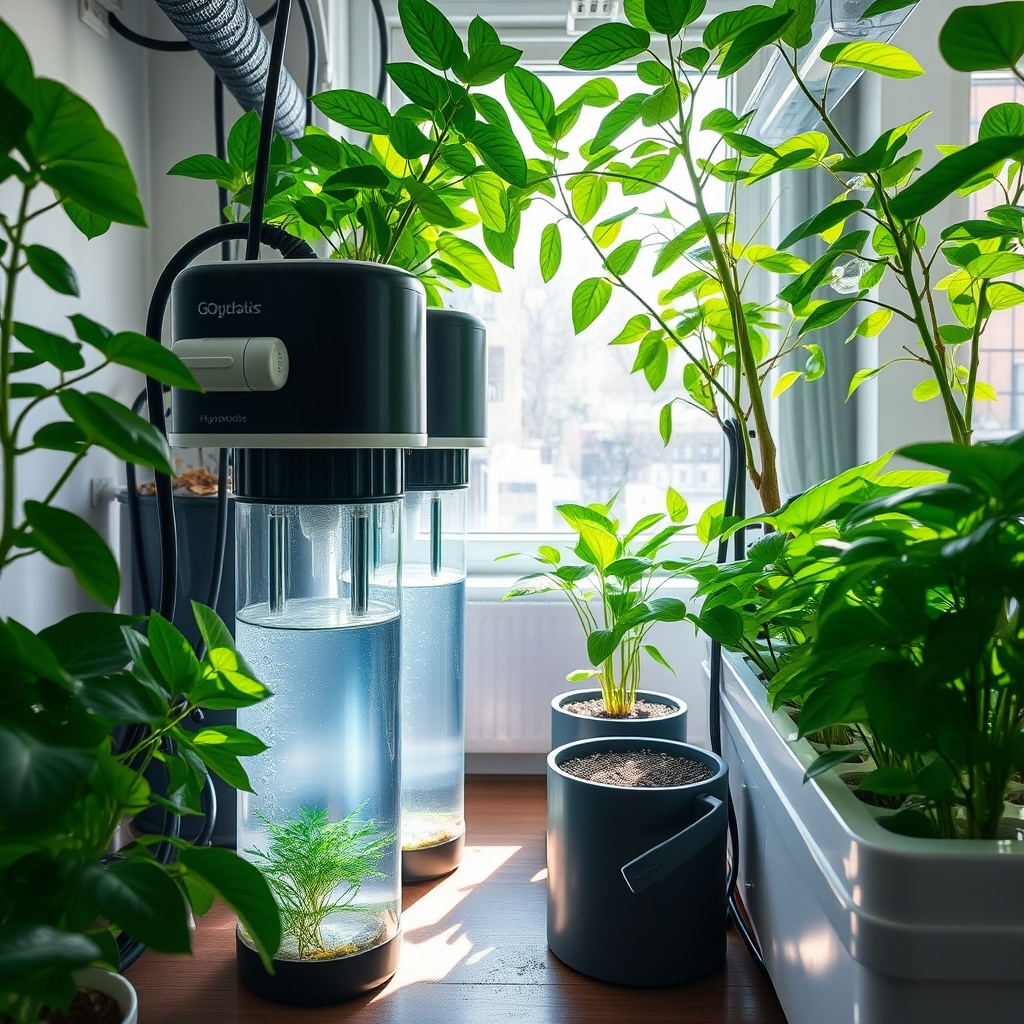Nurturing Nature: The Basics of Hydroponic Systems
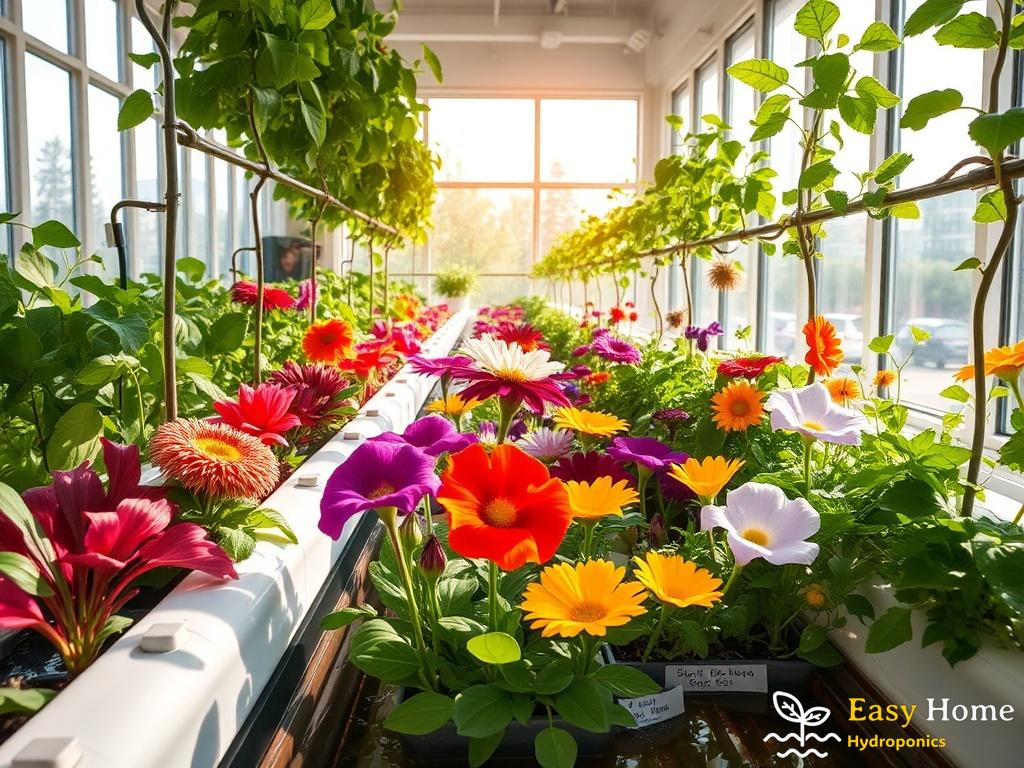
As we continue to seek sustainable solutions for food production, hydroponics emerges as a fascinating method that is transforming the agricultural landscape. This soil-less growing technique allows for the cultivation of plants in nutrient-rich water, making it ideal for producing vibrant edible flowers. Whether you’re a seasoned gardener or a curious newcomer, understanding the basics of hydroponic systems can be your first step towards nurturing nature in an innovative way.
When diving into the world of hydroponics, it’s essential to understand that different systems cater to various needs and preferences. Each type has its own set of advantages and considerations, especially when it comes to cultivating delicate edible flowers.
| Type of Hydroponic System | Description | Best For |
|---|---|---|
| Deep Water Culture (DWC) | Plant roots are submerged in a nutrient solution, allowing for rapid growth. | Fast-growing flowers like nasturtiums. |
| Nutrient Film Technique (NFT) | A thin film of nutrient solution continuously flows over the roots. | Medium-sized edible flowers such as marigolds. |
| Drip System | Nutrient solution drips directly onto the root zone. | Variety of small edible flowers and herbs. |
Creating a thriving hydroponic environment requires attention to several critical components. Understanding these elements will ensure your edible flowers flourish and provide a stunning visual and culinary experience.
- Light: Adequate lighting, whether natural or artificial, is crucial for photosynthesis.
- Nutrients: A balanced nutrient solution tailored for flowers promotes healthy growth.
- pH Level: Maintaining the right pH ensures optimal nutrient absorption.
- Air Circulation: Proper airflow prevents mold and supports healthy plant development.
- Temperature Control: Monitoring temperature ensures an ideal growth environment.
Floral Delights: Choosing the Right Edible Flowers
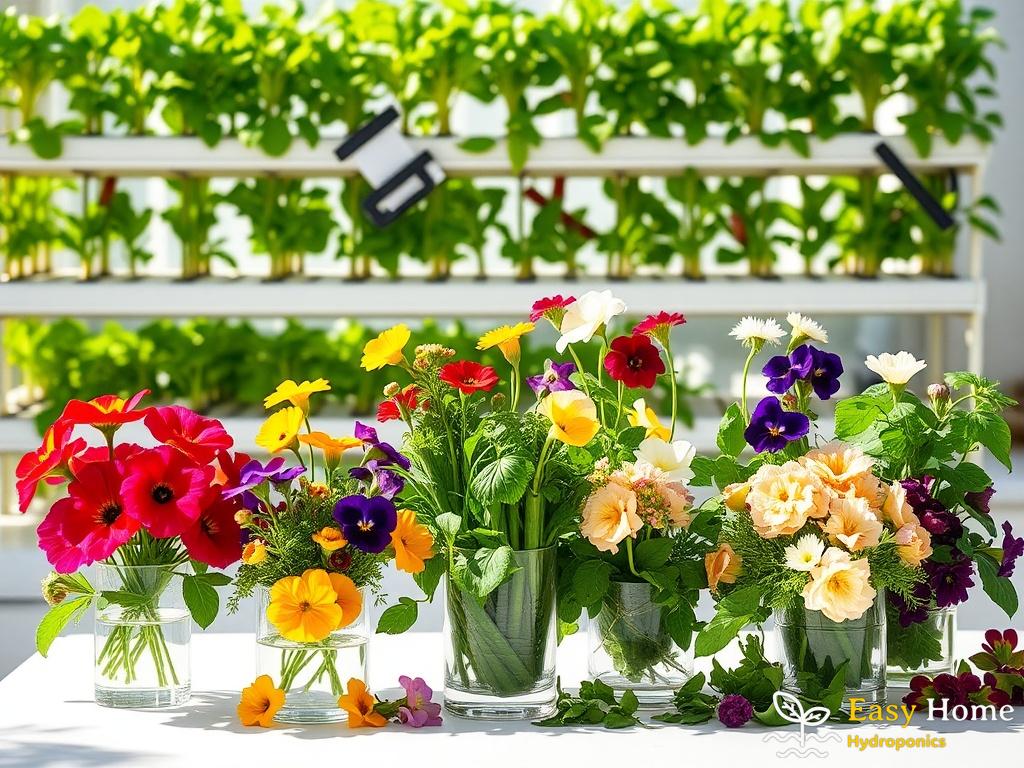
As the world of hydroponics opens up new avenues for culinary creativity, the selection of edible flowers becomes paramount. Not only do these vibrant blooms add a splash of color to our plates, but they also bring unique flavors and nutritional benefits. By choosing the right edible flowers, you can elevate your dishes and impress your guests, making each meal an unforgettable experience.
When selecting edible flowers for hydroponic cultivation, it’s essential to consider various factors that influence both growth and culinary value. Different flowers thrive in distinct hydroponic systems, and understanding these nuances can lead to a thriving garden filled with flavor and beauty. The key is to find flowers that not only grow well in a nutrient-rich environment but also complement the dishes you wish to create.
Among the many edible flowers available, some stand out for their vibrant colors and delightful flavors. For instance, nasturtiums are not only visually stunning with their bright orange and yellow petals, but they also impart a peppery taste that can elevate salads and garnishes. Another excellent option is the chive blossom, offering a mild onion flavor that can enhance dishes without overwhelming the palate. On the other hand, calendula blooms, with their sunny hues, bring a hint of spice and are often used in herbal teas and culinary oils.
Moreover, pansies and violas are perfect for those looking to add a touch of elegance to their plates. Their mild, sweet flavor pairs wonderfully with desserts and cocktails, making them a versatile choice for any culinary repertoire. As you explore the world of edible flowers, keep in mind that the right selection can transform a simple dish into an artistic masterpiece.
While the beauty and flavor of edible flowers are enticing, understanding their specific growing conditions is crucial for successful hydroponic production. Factors such as light requirements, nutrient preferences, and growth rates vary from flower to flower. For instance, some flowers may thrive in low-light conditions, while others may require full sun to flourish. Ensuring that your hydroponic system can cater to these needs will ultimately boost your yield and quality.
As you embark on this floral journey, consider creating a small chart to track the growth requirements and characteristics of your chosen flowers. This will not only help you optimize your hydroponic setup but will also serve as a handy reference as you expand your edible flower repertoire. With careful planning and attention to detail, your hydroponic garden can become a source of inspiration, flavor, and beauty.
Water Wonders: Nutrient Solutions for Vibrant Growth
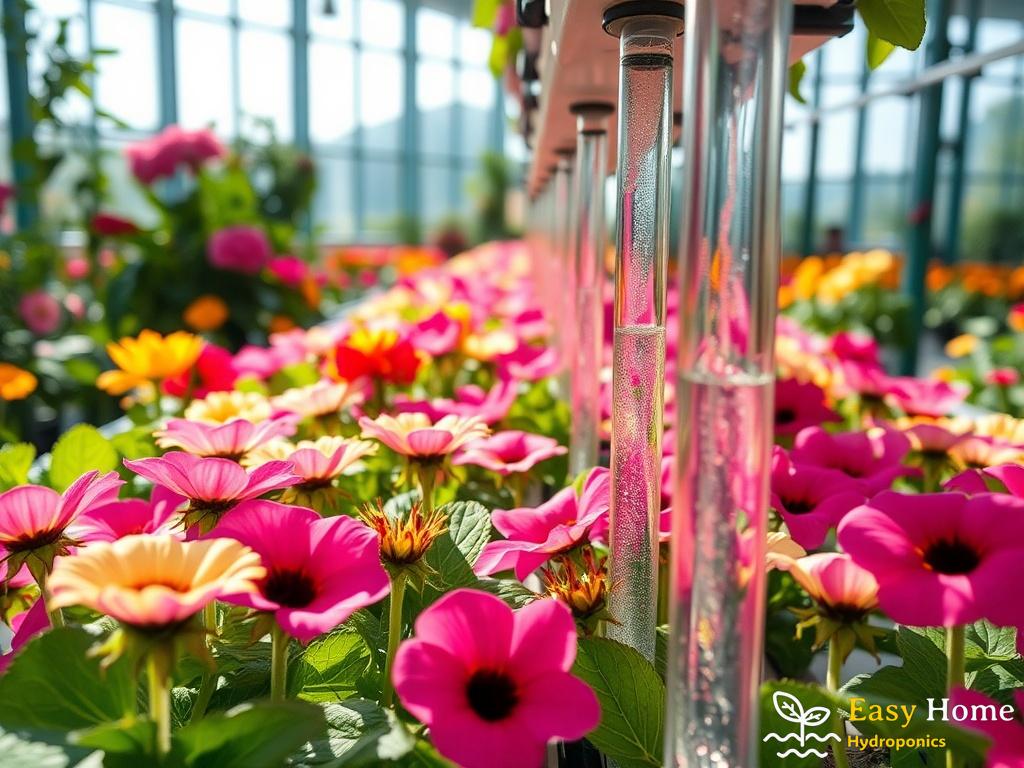
In the enchanting world of hydroponic flower production, water is not merely a life source; it is the canvas upon which vibrant blooms are painted. The nutrient solutions that nourish these flowers play a pivotal role in determining their health, color, and flavor. This section delves into the intricacies of crafting the perfect nutrient solutions that will empower your edible flowers to thrive.
Creating a successful nutrient solution requires a delicate balance of macronutrients and micronutrients, each contributing to specific growth functions. Understanding the roles of these nutrients helps in formulating a solution tailored to the specific needs of your edible flowers.
- Nitrogen (N): Essential for leaf and stem growth, nitrogen promotes lush green foliage.
- Phosphorus (P): Vital for root development and flowering, phosphorus enhances blooming potential.
- Potassium (K): Aids in overall plant health, potassium improves disease resistance and flower quality.
- Calcium (Ca): Important for cell wall structure, calcium contributes to stability and growth.
- Magnesium (Mg): A key component of chlorophyll, magnesium aids in photosynthesis.
Finding the right concentration of nutrients is akin to finding the perfect recipe; too much or too little can spell disaster. Monitoring pH levels is equally crucial, as the availability of nutrients is significantly impacted by acidity or alkalinity. The ideal pH range for hydroponic edible flowers typically lies between 5.5 and 6.5.
| Nutrient | Desired Range (ppm) | Function |
|---|---|---|
| Nitrogen | 150-250 | Leaf and stem growth |
| Phosphorus | 40-80 | Root development and flowering |
| Potassium | 200-300 | Overall health and quality |
| Calcium | 80-150 | Cell structure and stability |
| Magnesium | 30-50 | Photosynthesis |
By regularly testing and adjusting your nutrient solution, you can ensure that your edible flowers receive the optimal combination of elements necessary for robust growth.
Different edible flowers may have unique nutrient preferences and requirements. For instance, while nasturtiums may thrive on higher nitrogen levels to boost their foliage, pansies might benefit from a balanced nutrient profile to enhance their color and texture. Keeping a detailed growth journal can aid in observing how different flowers respond to various nutrient solutions, allowing for continuous improvement in your hydroponic practices.
In conclusion, mastering nutrient solutions is a crucial step in unlocking the full potential of your hydroponic flower garden. With the right balance, your edible flowers will not only grow but will flourish in a spectacular display of colors and flavors, ready to delight the senses.
Light it Up: Harnessing the Power of Grow Lights
In the quest for thriving hydroponic gardens, one cannot underestimate the pivotal role of lighting. Whether you are growing delicate edible flowers indoors or in a greenhouse, providing the right light spectrum is essential for promoting healthy growth, vibrant colors, and robust flavors. This section will illuminate the importance of grow lights and how they can be effectively utilized to enhance your hydroponic flower production.
When it comes to choosing grow lights, the options are as varied as the flowers you aim to cultivate. Each type of grow light offers unique benefits and considerations, making the selection process crucial for achieving optimal growth conditions.
- LED Grow Lights: Energy-efficient and long-lasting, LED lights provide a full spectrum of light, making them ideal for all stages of plant growth. They emit minimal heat, reducing the risk of scorching delicate flowers.
- Fluorescent Lights: Affordable and widely available, fluorescent lights are perfect for seedling stages. They produce a softer light that can help cultivate young plants without overwhelming them.
- High-Intensity Discharge (HID) Lights: Known for their powerful output, HID lights are great for larger setups. However, they require careful heat management and are best suited for experienced growers.
The spectrum of light plays a crucial role in plant growth and development. Understanding how different wavelengths affect your flowers can dramatically enhance your hydroponic garden.
| Light Spectrum | Impact on Growth |
|---|---|
| Blue Light (400-500 nm) | Promotes vegetative growth and strong root development. |
| Red Light (600-700 nm) | Encourages flowering and fruiting stages, enhancing bloom quality. |
| Full Spectrum Light | Combines blue and red wavelengths, supporting all growth stages for a balanced approach. |
By strategically utilizing grow lights that emit the right spectrum, you can create an environment that mimics natural sunlight, ensuring your edible flowers thrive and flourish.
Just as important as intensity and spectrum is the timing of light exposure. Understanding the photoperiod—how long plants are exposed to light—can significantly affect their growth cycle.
For most edible flowers, a light cycle of 12-16 hours of light followed by 8-12 hours of darkness works wonders. This cycle mimics natural conditions and allows plants to undergo essential processes such as photosynthesis and respiration.
In summary, harnessing the power of grow lights is an art that can elevate your hydroponic flower production to new heights. By selecting the right type of lights, understanding the importance of light spectrum, and timing your light exposure, you will lay the groundwork for a flourishing garden filled with beautiful edible flowers, ready to delight both the eyes and the palate.
Pollination Perfection: Ensuring Flower Quality and Yield
In the vibrant world of hydroponic edible flower production, achieving pollination perfection is a critical step that can significantly influence both the quality and yield of your blooms. While hydroponics allows for controlled growth conditions, it does not automatically guarantee successful pollination. Understanding the intricate relationships between flowers and their pollinators, along with implementing effective techniques, can elevate your hydroponic garden to new heights of productivity.
To foster an environment conducive to pollination, it is essential to attract and support a variety of pollinators. While many hydroponic systems are designed for indoor use, creating a welcoming atmosphere for bees, butterflies, and other beneficial insects can be accomplished even within these confines. Incorporating elements such as strategically placed flowering plants can entice pollinators, enhancing the overall success of your edible flower production. Moreover, providing a moisture source, like a small dish of water or a shallow pan, can ensure that these vital creatures have the hydration they need to thrive in your hydroponic setup.
When natural pollination methods fall short, especially in controlled environments, hand pollination emerges as a reliable alternative. This technique involves using a small brush or even a cotton swab to transfer pollen from the male parts of a flower to the female stigma. It’s a meticulous process, but the rewards can be substantial. By ensuring that each flower receives adequate pollen, you can dramatically improve the chances of fruit and seed development, leading to a more bountiful harvest. Additionally, hand pollination allows for greater control over the genetic diversity of your plants, enabling you to experiment with different flower varieties and their unique characteristics.

